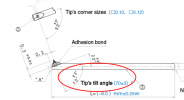I have the Muffsy Phono preamp so I've been doing all sorts of loading tests in the past. I reduced R from 47k to 36k here:Did you do anything to load the cartridge? The V15 has a bit of inductance; in parallel with the capacitance of the tonearm cable and the input capacitance of your phono section (not specified; it always should be in measurements like this). That results in a resonance that will behave like a treble tone control. If you didn't deal with this aspect, your results here are meaningless as they do not represent the actual cartridge performance.
For more on this see http://www.hagtech.com/loading.html

Introducing the Phono Cartridge Measurement Library
This was our reference in the 1970s in a recording studio. We had an historic archive of concert performances cut to disc before tape. Our reference arms were the SAE 3000? large diameter disc curved on a large mass large diameter 16"? mains synced platter. At home at the time, I had a V15-IV on...
 www.audiosciencereview.com
www.audiosciencereview.com
The original V15VxMR has a bit of drop in the highs - not linear as the original V15V-MR; the SAS/B usually a peak between 10-20 kHz given the same conditions. Not all stylii are identical though so each one needs some loading fine-tuning to be at their best.

